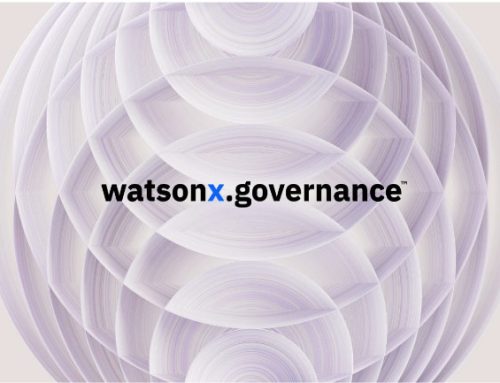
The Compliance Killer: How Watsonx.governance is Saving Companies from AI Audit Disasters
The age of artificial intelligence is no longer on the horizon; it has firmly arrived, permeating every facet of the modern enterprise. From automating complex financial transactions to personalizing customer experiences and streamlining hiring processes, AI promises a new frontier of efficiency and innovation.
However, beneath this shimmering surface of progress lies a treacherous undercurrent of risk. As organizations race to deploy AI models, a silent threat is escalating: the specter of non-compliance, which can culminate in devastating legal and financial consequences.
This is the compliance killer, an unseen predator in the digital ecosystem, and for many, the audit disaster is not a matter of if, but when.
The Rising Threat of AI Non-Compliance: A Regulatory Minefield
Regulators across the globe are moving swiftly to cage the unpredictable nature of AI. The European Union has taken a formidable lead with its landmark EU AI Act, a comprehensive legal framework that categorizes AI systems by risk and imposes stringent obligations on those deemed “high-risk.”
The penalties for non-compliance are severe, with potential fines of up to €35 million or 7% of a company’s global annual turnover, whichever is higher, for the most serious violations. This legislation has an extraterritorial reach, meaning any company with users in the EU must comply.
In the United States, the Securities and Exchange Commission (SEC) is signaling a new era of scrutiny with proposals targeting the use of AI in the financial sector. The commission is particularly concerned with “AI washing” (where firms exaggerate their AI capabilities) and the inherent conflicts of interest that can arise from biased or opaque algorithms in investment advice. The message from Wall Street’s top regulator is clear: transparency and robust governance are non-negotiable.
These new regulations build upon the already formidable General Data Protection Regulation (GDPR), which carries its own heavy stick. GDPR penalties for data privacy breaches can reach up to 4% of global annual revenue, a figure that has resulted in staggering fines for tech giants.
Cases against companies like Meta and Amazon have seen penalties soar into the hundreds of millions, and in one instance, over a billion euros, for mishandling user data – a core component of how most AI systems are trained and operated.
The cautionary tales are no longer theoretical. Consider the ongoing class-action lawsuit, Mobley v. Workday, Inc. The case alleges that the human resources software company’s AI-powered screening tools are systematically biased, discriminating against applicants based on race, age, and disability.
The plaintiff, Derek Mobley, claims he was rejected from over 100 job applications processed through the system, sometimes receiving automated rejections in the middle of the night. This lawsuit serves as a stark warning: an AI model, if left ungoverned, can become a legal time bomb, exposing a company to significant litigation, reputational damage, and financial loss.
Why Traditional Governance Fails for AI: Static Rules for a Dynamic World
For decades, organizations have relied on manual audits, spreadsheet-based tracking, and static rulebooks to manage risk and compliance. This traditional approach, however, is fundamentally ill-equipped to govern the dynamic and often inscrutable nature of AI.
The core of the problem lies in the static-versus-dynamic mismatch. A manual audit might review a model at a single point in time, but AI models are not static. They are in a constant state of flux, learning and evolving with every new piece of data they process.
A model that is fair and accurate today could easily become biased and unreliable tomorrow. This is the danger of data drift, where the statistical properties of the input data change over time, causing the model’s performance to degrade silently. By the time a manual audit catches it, the damage is already done.
Furthermore, traditional governance methods are blind to a new breed of AI-specific threats. One of the most insidious is the prompt injection attack. In this scenario, a malicious actor inputs cleverly crafted text into a large language model (LLM) to manipulate its output, override its safety protocols, or trick it into revealing sensitive information.
A simple spreadsheet cannot detect, let alone prevent, such a sophisticated and context-dependent attack. It’s like trying to build a fortress with a blueprint from a bygone era—the new weapons of risk will simply bypass its defenses.
The Solution is IBM Watsonx.governance – Your Automated Compliance Shield
In this high-stakes environment, a new paradigm of governance is required—one that is as dynamic, intelligent, and automated as the AI it oversees. This is precisely the challenge that IBM Watsonx.governance is designed to solve. It is not merely a tool; it is a comprehensive toolkit for directing, managing, and monitoring your organization’s AI activities in real-time.
- Automated compliance and real-time monitoring:
Watsonx.governance automates the entire AI lifecycle governance process. It provides continuous, real-time monitoring of your models for critical metrics like fairness, bias, drift, and quality. Instead of waiting for a quarterly review, you are alerted the moment a model begins to deviate from its established thresholds.
The platform comes with pre-built policy templates that can be customized for major regulations like GDPR and the Health Insurance Portability and Accountability Act (HIPAA), translating complex legal requirements into enforceable, automated policies.
- Audit-ready documentation on demand:
When regulators knock on your door, scrambling to assemble documentation is a recipe for disaster. Watsonx.governance removes this panic by automatically generating the necessary audit-ready reports. It creates “factsheets” for each model, providing a transparent and detailed lineage of its development, training data, performance metrics, and any corrective actions taken.
This includes crucial “explainability scores,” which help demystify the “black box” of AI by providing clear, human-understandable reasons behind a model’s decisions.
- Closed-loop remediation:
Detection without a cure is of little value. Watsonx.governance provides a closed-loop remediation process. When the system flags a model for bias or performance degradation, it can trigger automated corrective actions, such as initiating a retraining process with a more balanced dataset.
This proactive stance ensures that risks are not just identified but are neutralized before they can escalate into a full-blown compliance disaster.
ASB’s Unique Value Add: Expert Implementation for Immediate Protection
While Watsonx.governance provides the foundational technology, realizing its full potential requires expert implementation and industry-specific customization. This is where ASB Resources delivers its unique value.
- Fast-track implementation:
The threat of non-compliance is immediate, and your response must be equally swift. Our team of certified experts understands that time is of the essence. We specialize in rapid deployment, which is why we can confidently say, “We deploy Watsonx.governance in weeks, not 6 months.” Our streamlined methodology ensures that your organization is protected and audit-ready in a fraction of the time of a typical enterprise rollout.
- Industry-specific guardrails:
Generic governance is not enough. Different industries face unique compliance challenges. ASB Resources develops and implements industry-specific guardrails tailored to your operational realities.
For healthcare: We implement robust PHI masking in LLM prompts, ensuring that sensitive patient health information is automatically identified and redacted before it is processed by a model, a critical safeguard for HIPAA compliance.
For finance: We configure specialized anti-money laundering (AML) checks for AI-driven transactions. This allows financial institutions to leverage the power of AI for threat detection while ensuring that the models themselves are compliant with stringent financial regulations.
- Post-deployment assurance:
Our commitment to your compliance does not end at deployment. We understand that the regulatory landscape and your AI ecosystem are constantly evolving. That is why we provide quarterly compliance health checks. These proactive reviews ensure that your governance framework remains robust, your models are performing optimally, and you are prepared for any new and emerging regulatory requirements.
Are you ready to take control of your AI future?
The era of “move fast and break things” is over. In the age of AI, the new mantra must be “move fast and build trust.” The risks of non-compliance are too great to ignore, and the tools of traditional governance are no longer sufficient. Watsonx.governance offers a powerful, automated solution to navigate the complexities of AI regulation, and ASB Resources provides the expert partnership to unlock its full potential quickly and effectively.
Don’t let your AI innovation become a compliance liability. Protect your organization from the silent killer of AI non-compliance.
Connect with us for a free compliance audit and regulatory workshop. Let ASB Resources and Watsonx.governance turn your AI audit fears into a showcase of transparency, responsibility, and trust.








